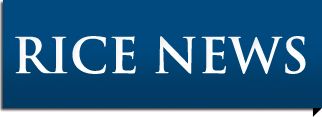Lecture to explore the cheatin’ ways of the masters
FROM RICE NEWS STAFF REPORTS
Did the great master artists of the 15th century use optical tricks to create their incredible photographic-like paintings and drawings? Claims have been made that some European artists created their paintings by projecting images onto their canvases and then tracing the projections. David Stork, chief scientist at Ricoh Innovations, will discuss the controversial theory at a Nov. 30 lecture and examine how computer image analysis of Renaissance masterpieces sheds light on the bold theory.
In 2001, artist David Hockney and scientist Charles Falco stunned the art world with a claim that as early as 1420, Renaissance artists employed optical devices such as concave mirrors to project images of real scenes onto their canvases, which they then traced or painted over. In this way, the theory attempts to explain the newfound heightened naturalism or ”opticality” of painters such as Jan van Eyck, Robert Campin, Hans Holbein the Younger and many others.
Stork’s talk will describe the application of rigorous computer image analysis to masterpieces adduced as evidence for this theory. It covers basic geometrical optics of image projection, the analysis of perspective, curved surface reflections, shadows, lighting and color. While there remain some loose ends, such analysis of the paintings, infrared reflectograms, modern re-enactments, internal consistency of the theory, and alternate explanations allow researchers to judge with high confidence the plausibility of this theory.
Stork is a visiting lecturer at Stanford University, where he has taught ”Light, Color and Visual Phenomena,” ”Pattern Classification,” ”Optics, Perspective and Renaissance Painting” and other courses. He studied art history at Wellesley College and was artist-in-residence through the New York State Council of the Arts. He holds 33 patents and his five books include ”Seeing the Light: Optics in Nature,” ”Photography, Color, Vision and Holography” with D. Falk and D. Brill and ”Pattern Classification” (second ed.) with R. Duda and P. Hart. He was one of four scientists invited to analyze Hockney’s theory at a major symposium at the New York Institute for the Humanities in 2001.
The lecture will be held at 4 p.m. in McMurtry Auditorium, Anne and Charles Duncan Hall.


Leave a Reply